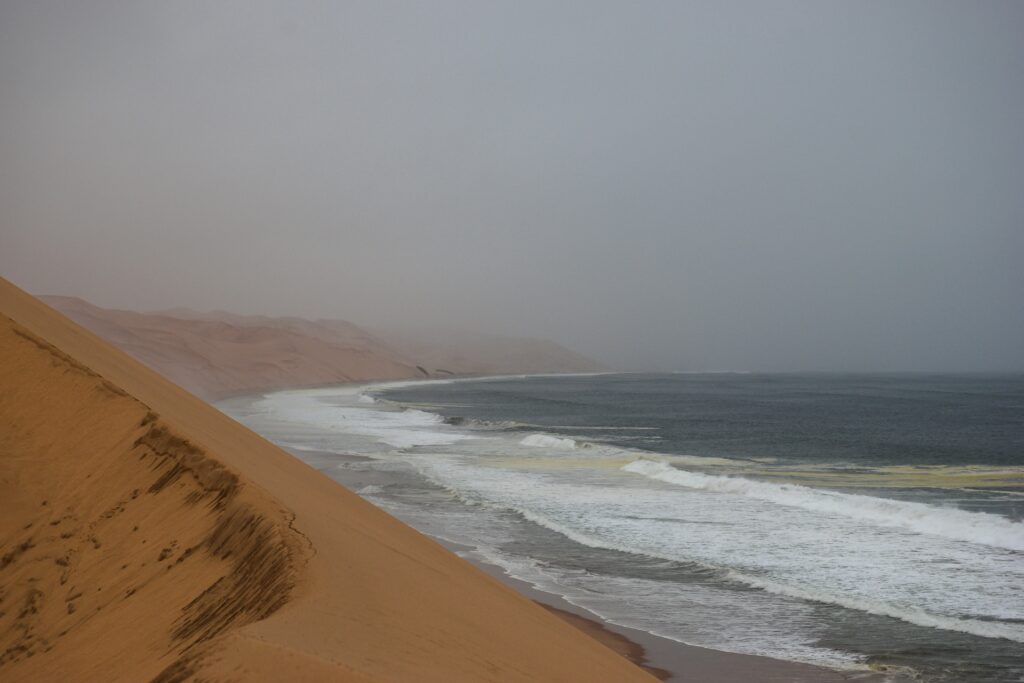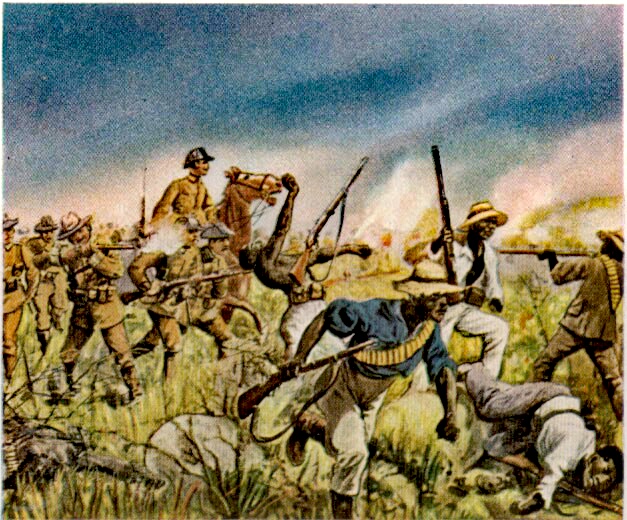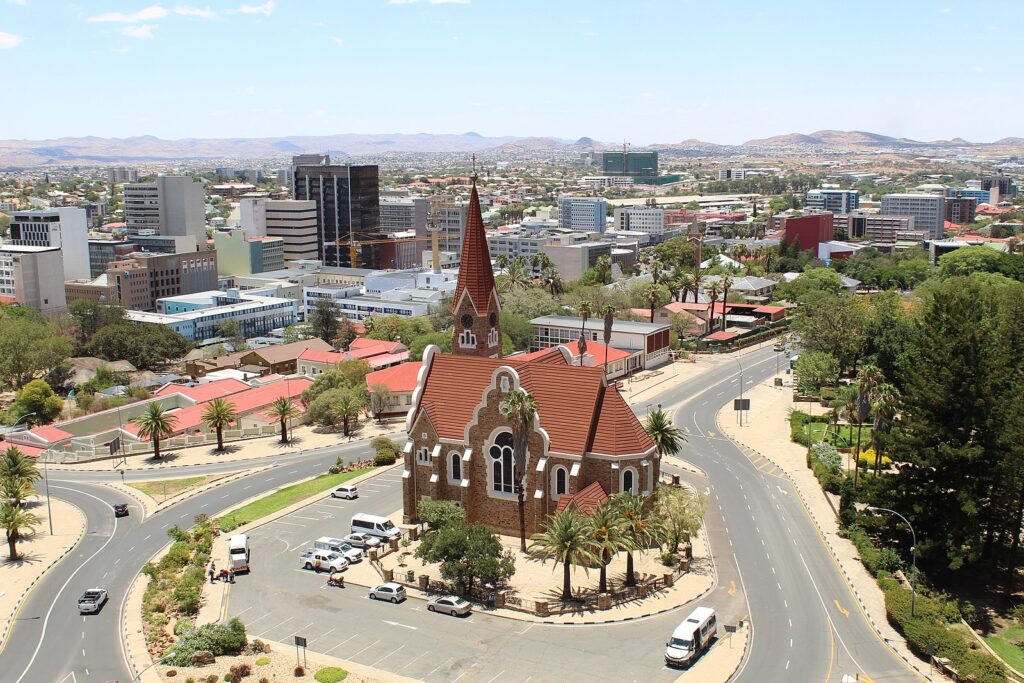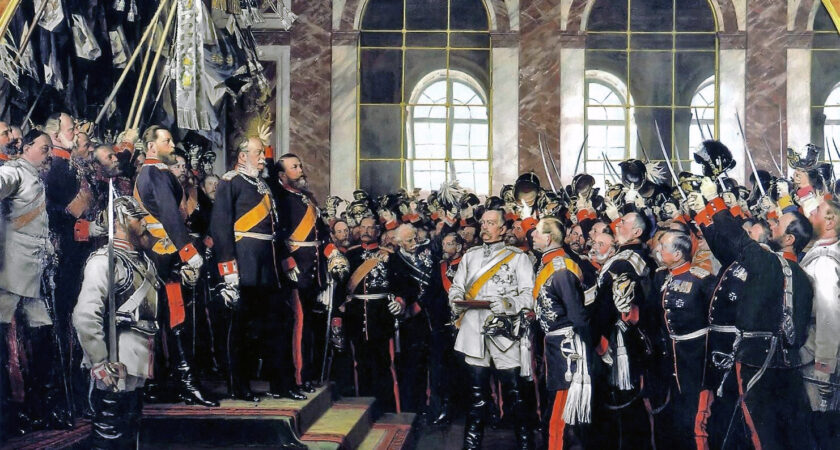By the late 19th Century, the scramble for Africa by the European Empires had begun. Germany was a little late to the party, focusing instead on consuming its central European neighbours. Eventually, in an effort to compete with Britain and France, they began looking overseas.
The genesis of the colony
In 1882, a German merchant by the name of Adolf Luderitz bought a huge swathe of land (from the tribal chiefs) on the Atlantic coast, and asked the Chancellor to make it a German protectorate. This is the land which, just over a century later, would give birth to the Republic of Namibia.
Chancellor Otto von Bismarck, was the man credited with uniting all the German states into one country – known as the Second Reich – in 1871. Initially he was against the idea of an overseas Empire, believing that such an endeavour was a big money loser.
However, he changed his mind during the mad scramble for Africa, and therefore sent troops to establish a colony in Mr Luderitz’s part of the world. They would build new farms, towns, industries, and profit from the continents rich resources. There was one slight problem, however. The land already had people on it.
Namibia’s strange past
According to the Encylopaedia Britannia, not much is known about the history of Namibia, and later reports from explorers, missionaries and colonists are not 100% reliable.
The earliest known inhabitants of Namibia are the San peoples, a nomadic tribe that wasn’t particularly militant.
Centuries later, they were displaced by several migrating tribes from central Africa, principally the Nama & the Herero. The new tribal occupants operated a pastoral economy under a clan system, presided over by a High Chief.
Aside from a few encounters with Portuguese sailors in the 1400’s, the locals had very little contact with Europeans until the 1800’s.
A number of Christian Missionaries from Germany had enjoyed moderate success in South Western Africa, in the decades before merchants like Adolf Luderitz made their presence felt. But it was only after Bismarck made the region a protectorate in 1884, that the German settlers came flooding in.
The Colony was officially established on August the 7th 1884. With the backing of private German Banks, the colony became a major source of mineral deposits and diamonds.

The British presence
However, before all this could begin, there were some hasty diplomatic talks with the British, who controlled the very close port in Walvis Bay. Several agreements were signed in order for the two colonial powers to continue living peacefully as neighbours.
The weird panhandle in the north east of the country, known as the Caprivi strip, was one of the outcomes of these negotiations. The Germans wanted access to the Zambezi River, which they got.
Unfortunately for them, this particular route wasn’t much good for shipping, given the presence of Victoria Falls, a little further to the east.
Over the next few years, relations between the native tribes and the new settlers deteriorated. In 1893, the first major rebellion against German rule was launched.
The inevitable violence
The response from the Germans was swift and brutal. The natives were either driven from their lands, into the desert and left to starve, or they were placed into one of five new concentration camps (where they would be worked to death). Others were simply gunned down on the spot.
Between 1904 and 1908 the Germans carried out – what historians are calling – the first genocide of the 20th century. Around 80% of the Herero and Nama were slaughtered during this period.
The British Colonists in nearby South Africa were shocked by the brutality of the Germans, and did provide refuge for the Nama and Herero in their Bechunaland Protectorate (present day Botswana).
The German’s tried to justify their crimes, by deluding themselves into believing that they were racially superior to the Africans. They even attempted to “prove” this scientifically, by collecting the skulls of the Africans they killed, and taking them back to Germany, to be “studied”.

Germany loses the War & her Colonies
In 1915, German South West Africa was conquered by the Allied forces in World War I, and annexed to South Africa.
It would remain under South African administration (which included Apartheid) until 1990.
On the 21st of March, 1990, the Republic of Namibia was born. Today, it is a reasonably successful and prosperous democracy. There are 11 nationally recognised languages, but English is the Official Language.
There are still many reminders of the nation’s German past, such as street names, public monuments, and about 7% of the population is White.
Namibia today
The 21st century German government has acknowledged and apologised for their crimes in Namibia (without calling it genocide), and have even agreed to pay some compensation.
Not all Namibians are happy with the proposal. Consequently, negotiations between the two Governments are continuing.
P.S. Many of the skulls have also been returned to the relatives of the victims, so they can be finally laid to rest.


